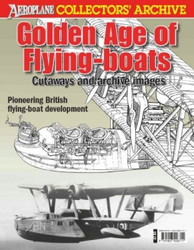| 25.11.2020, 12:16 | |||||
Автор книги: Martyn Chorlton (Editor) В этом выпуске Aviation Archive рассказывается о первых этапах разработки британских летающих лодок с 1913 года до последнего биплана ВВС Великобритании Supermarine Stranraer, поступившего на вооружение в 1937 году. Первоначальная концепция этого выпуска заключалась в том, чтобы сосредоточиться на бипланах, но сюда все же включили и такие типы, как Inverness, Prawn и Windhover. Техническая информация сведена к минимуму, а основное внимание уделено фотографиям, взятым из архива The Aeroplane. Период времени, рассматриваемый в этом выпуске, составляет немногим более 20 лет, но диапазон типов и технический прогресс, достигнутый за это время, поражает. Трудно поверить, что лодка Bat Boat, впервые взлетевшая в 1913 году, дала ростки, которые через поколение превратятся в Short Singapore III или Supermarine Stranraer. Те конструкторы-новаторы, которые впервые задумали летающую лодку, столкнулись со значительно большим количеством проблем, чем их наземные собратья. Тем не менее, успехи и гибкость такой машины продлили эру летающих лодок до 1950-х годов. Конструкция корпуса и достаточно мощные и надежные двигатели всегда были ключом к успеху летающей лодки, которая часто должна была лучше работать на воде, чем в воздухе. This edition of our Aeroplane Collectors’ Archive concentrates on early British fl ying-boat development from 1913, through to the RAF’s last biplane fl ying-boat to enter service – the Supermarine Stranraer in 1937. The original concept for this issue was to focus on biplane fl ying-boats but we have included such types as the Inverness, Prawn and Windhover. As with previous issues, technical information is kept to a minimum and attention is paid to photographs drawn from The Aeroplane’s archive. The time period covered in this issue is little more than 20 years but the range of types and the technical advances achieved in this time is astonishing. It is hard to believe that ‘Tommy’ Sopwith’s Bat Boat, which fi rst fl ew in 1913, helped to germinate a seed that would grow, within a generation, into the Short Singapore III or the Supermarine Stranraer. Those pioneering designers who fi rst envisaged a fl ying-boat faced considerably more problems than their land-based counter-parts. However, the rewards and the fl exibility of such a machine saw the fl ying-boat era continuing on into the 1950s. The hull design and suffi ciently powerful and reliable engines were always key to the success of a fl ying-boat, which often had to perform better on the water than in the air. | |||||
|
| |||||
| | | |||||
| Всего комментариев: 0 | |
